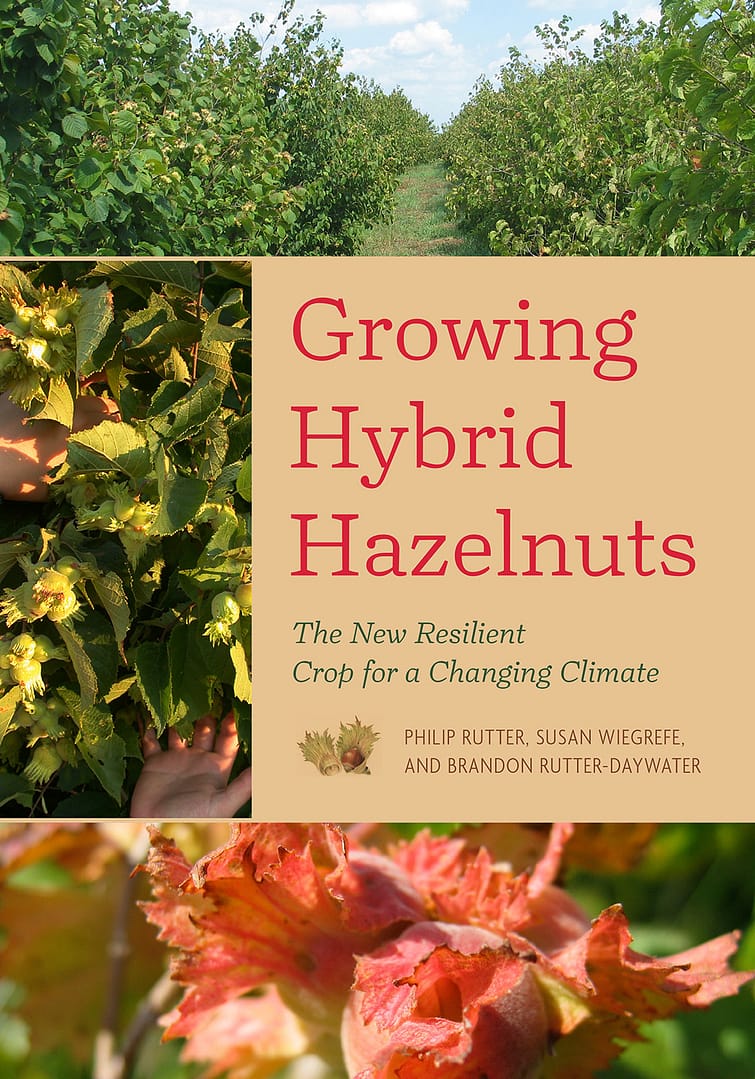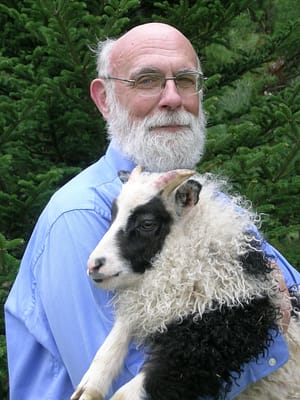Growing Hybrid Hazelnuts
The New Resilient Crop for a Changing Climate

| Pages: | 272 pages |
| Book Art: | Color photos, charts, graphs, and illustrations |
| Size: | 7 x 10 inch |
| Publisher: | Chelsea Green Publishing |
| Pub. Date: | February 6, 2015 |
| ISBN: | 9781603585347 |
Growing Hybrid Hazelnuts
The New Resilient Crop for a Changing Climate
Civilization is facing global threats like never before. Climate instability. Food insecurity. The endangered family farm. Water pollution and scarcity. Mass extinction. Converting agricultural land into more secure, climate-stabilizing, water-filtering, wildlife-harboring farms would be positively transformative. Luckily, there is a way, currently under development, to do just this in many temperate climates: hybrid hazelnuts.
Growing Hybrid Hazelnuts is the first comprehensive guide for farmers interested in how to get started growing hybrid hazelnuts, a crop designed from the very outset to address a host of problems with conventional modern agriculture. Once hybrid hazelnuts are established, no plowing, or even cultivation, is necessary. Dramatically improved infiltration rates prevent water from running off of fields, regardless of soil type. The crop’s extensive, permanent root systems—at work 365 days a year—mean that tilling should not be necessary in moderately wet soils, and that no fertilizer can escape into groundwater. No soil is lost to wind or rain; in fact, this crop builds soil, and wildlife finds cover and food in hazelnuts all year. Economically speaking, hazelnuts have a large, existing, and unsatisfied world market, not to mention their processing potential is even greater than soybeans. They are, without a doubt, the ecological crop of the future.
This book covers everything you need to know about NeoHybrid hazels, the new biological entity developed by the authors, including:
• The source of the species and the making of an artificial, directed hybrid swarm;
• The historical use of hazels as a staple food in Europe and Asia;
• The nutrient composition of the crop;
• The benefits of woody agriculture and the superior productivity of these hazels;
• Site requirements: slope, soils, soil tests;
• Planting and the establishment period;
• Managing the productive plantation, including maintaining biodiversity;
• When to harvest, and harvesting options (hand or machine);
• Processing, from harvest to market: drying, husking, cleaning, sizing, cleaning, roasting;
• Value-added options (oil, meal, nut butters);
• Co-products and their values (wood, shells, husks, sub food-grade nuts, biodiesel);
• The state of the world hazel market, and more
The first and only guide of its kind, Growing Hybrid Hazelnuts will appeal to small-scale and commercial farmers, both those already familiar with concepts of perennial agriculture and those interested in converting from conventional practices. Growing Hybrid Hazelnuts is a landmark book for the farming movement, offering a practical road to a hopeful future where crops build soil and the earth is regenerated, at the same time reaping profits for the farmer.
Reviews and Praise
Booklist-
"In Western industrial nations, hazelnuts offer a familiar flavoring to confections such as pralines and popular aromatic coffees. If the authors of this distinctive horticultural guide have their way, however, hazelnuts will also be bred to resist the ravages of climate change and outstrip soybeans as a high demand, optimally sustainable crop worldwide. Developed and grown at the Badgersett Research Farm in Minnesota, where Rutter is the CEO, the hybrid plants recommended here are compact, densely yielding shrubs that require little cultivation, efficiently soak up water, and actually reverse soil erosion. Amazingly versatile, the hazelnut and its coproducts, including husks and shells, can be used not only for food but also for fuel and construction. Along with abundant photographs and useful charts, Rutter and his coauthors provide a wealth of information on growing-site requirements and management of a productive plantation, along with invaluable marketing tips. Their guide is a godsend for agricultural entrepreneurs and farmers desperate for newer, financially lucrative crops to replace those that have been, or may soon be, compromised by climate change.”
More Reviews and Praise
"Anyone ready to innovate outside the box will be blown away by the vision and practical insights demonstrated in Growing Hybrid Hazelnuts. The eclectic blend of science and practical how-to information packed into this fascinating, readable book is enough to inspire a whole new generation of farmers. Turning soybean fields into hazelnut plantations is truly a vision for the stout-hearted pioneer futuristic farmer. Sign me up."--Joel Salatin, farmer and author
"A more resilient future requires diverse and hardy food-bearing crops. Growing Hybrid Hazelnuts is an encyclopedia of the 'how-to' and 'why-for' of breeding, growing, harvesting and marketing this unique and important crop. We just planted 300 hazelnuts last year!”--Nathan John Hagens, Editor, TheOilDrum; President, Bottleneck Foundation
"If you are dissatisfied with the current state of the annual based agriculture system currently dominated by corn and soy, then here is an alternative. This book is an action plan building off of Phil Rutter’s thirty years of experience, where you can become part of the actual on-the-ground change towards building a perennial woody system that conserves resources while providing for human needs."--Diego Footer, Founder of Permaculture Voices
"This book is not only a testament to 40 years of dedicated hazel breeding work, but also a call for more tree crops for a sustainable agriculture in general; a fantastic manual about all aspects of cultivating hardy hazel trees and processing their nuts."--Martin Crawford, author of Creating a Forest Garden
"The authors of Growing Hybrid Hazelnuts have been advocating woody-plant staple crops for carbon sequestration since I was in high school. This manual provides theory, context, budgets, and practical details like pest management and fertility for this important new crop. Worth the price for the information on their innovative hybrid swarm breeding system alone.”--Eric Toensmeier, author of Paradise Lot and coauthor of Edible Forest Gardens
“Growing Hybrid Hazelnuts is a compelling work combining natural history, genetics, and ecology to form a rich strategy for breeding hardy, disease-resistant, and productive hazelnuts. The need for perennial staple crops is great, and the authors show that it takes time, integrity, and patience to develop a crop that will feed the world. This book not only completely covers hybrid hazelnut cultivation, it also offers a roadmap for breeding other crops if we are to get serious about regenerative perennial food production."--Steve Gabriel, coauthor of Farming the Woods








